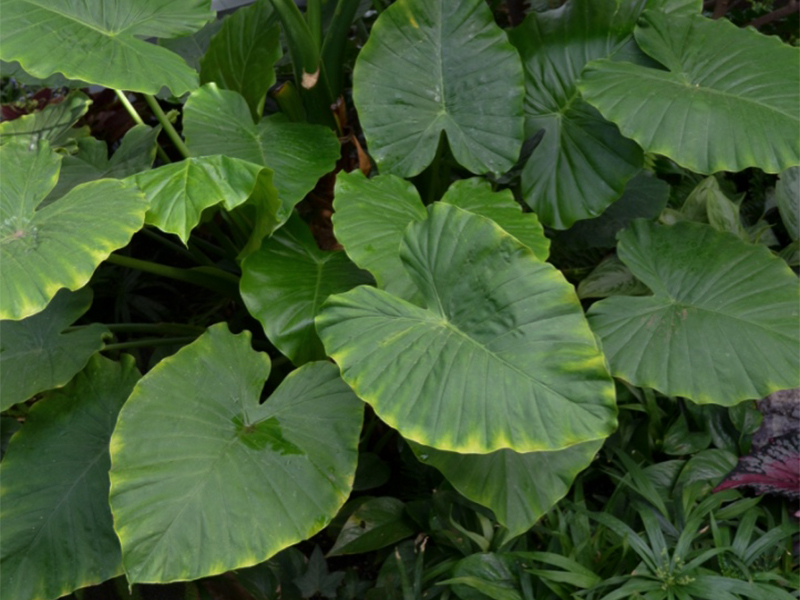| General Description | Large plant grown for its distinct leaves. |
| Propagation | Plant as soon as the seed ripens. Divide the rhizomes, separate offsets, or root stem cuttings in spring or summer. |
| Cultivation | Grow in filtered light and partial shade, with moist but well drained soil of moderate fertility. Prefers high humidity, ample water, and fertilize every 2 - 3 weeks during the growing season. Cut back on water in the winter. |
| Pests | Fungal and bacterial leaf diseases, mealybugs, and scale insects. |
| Notable Specimens | Centennial Conservatory, Thunder Bay, Ontario, Canada. |
| Bark/Stem Description | Rhizomatous or tuberous roots. |
| Leaf Description | Large, veined, can be either arrow-shaped or heart-shaped. |
| Flower Description | Flowers are small. |
| Colour Description | Leaves are green and can be marked with black, dark purple, or bronze. |
